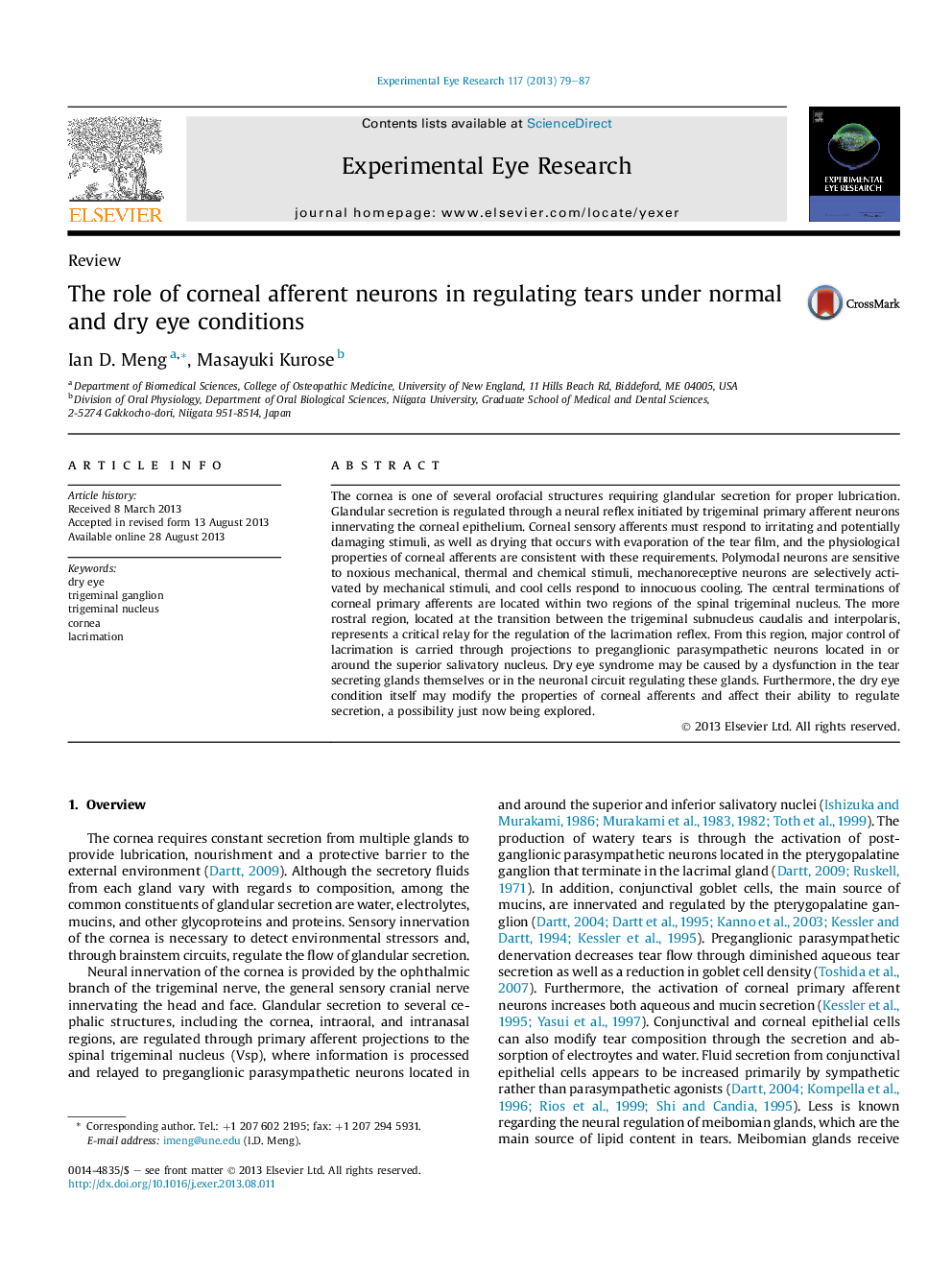| Article ID | Journal | Published Year | Pages | File Type |
|---|---|---|---|---|
| 4011180 | Experimental Eye Research | 2013 | 9 Pages |
•Tearing is regulated through a reflex initiated by trigeminal primary afferents.•Corneal afferents sense tear film evaporation and potentially damaging stimuli.•Dry eye modifies corneal afferents, affecting the regulation of secretions.
The cornea is one of several orofacial structures requiring glandular secretion for proper lubrication. Glandular secretion is regulated through a neural reflex initiated by trigeminal primary afferent neurons innervating the corneal epithelium. Corneal sensory afferents must respond to irritating and potentially damaging stimuli, as well as drying that occurs with evaporation of the tear film, and the physiological properties of corneal afferents are consistent with these requirements. Polymodal neurons are sensitive to noxious mechanical, thermal and chemical stimuli, mechanoreceptive neurons are selectively activated by mechanical stimuli, and cool cells respond to innocuous cooling. The central terminations of corneal primary afferents are located within two regions of the spinal trigeminal nucleus. The more rostral region, located at the transition between the trigeminal subnucleus caudalis and interpolaris, represents a critical relay for the regulation of the lacrimation reflex. From this region, major control of lacrimation is carried through projections to preganglionic parasympathetic neurons located in or around the superior salivatory nucleus. Dry eye syndrome may be caused by a dysfunction in the tear secreting glands themselves or in the neuronal circuit regulating these glands. Furthermore, the dry eye condition itself may modify the properties of corneal afferents and affect their ability to regulate secretion, a possibility just now being explored.
